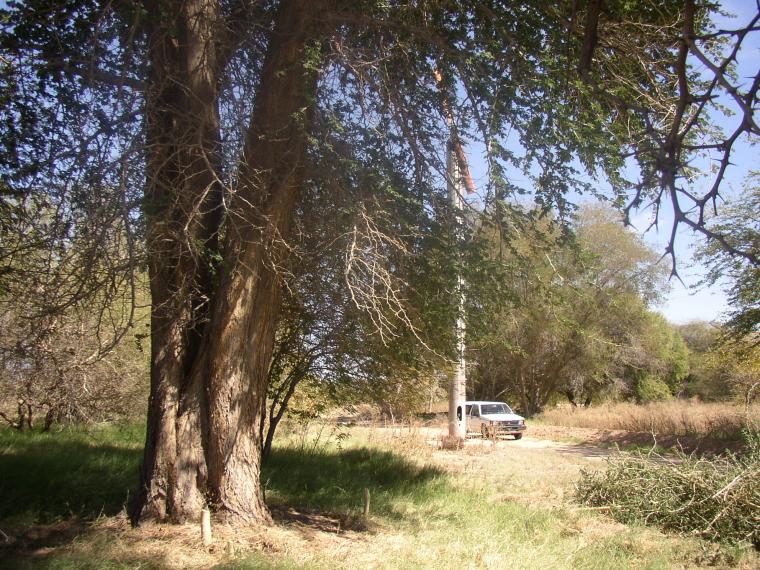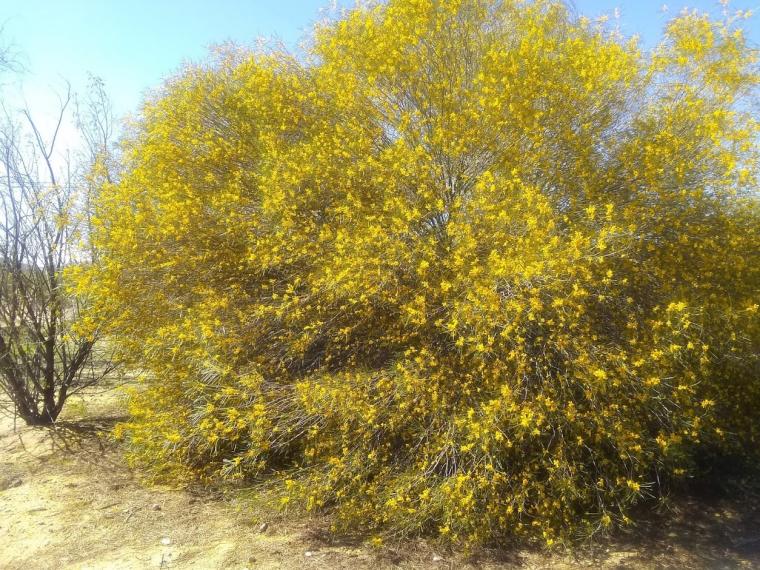Evaluation Fields
DELEP has maintained four field evaluation sites in Arizona that we have used to evaluate over 600 legume species since 1989. Two active evaluation fields are at the UA Campus Agricultural Center near Campbell Avenue and Roger Road in Tucson. The original 1.5-acre field, Field 6, includes trees and shrubs, some of which were planted as long ago as 1989. A second 0.5-acre field, Field 3, was added also at the Campus Agricultural Center in 1998 with the planting of shrubs, small trees, and some semi-woody perennials.
Psorothamnus_spinosus_Field6.jpg
Psorothamnus spinosus at DELEP's Field 6 at the UA Campus Agricultural Center
Survival and performance of the plants in these fields have been monitored and the information has been included in articles that have appeared in DELEP's newsletter Aridus. Over the years, DELEP has worked with the landscape nursery industry to provide seeds or plants of woody legumes with landscape potential for further evaluation and possible commercialization. Over one dozen low water-use trees and shrubs have been introduced to the Arizona landscape nursery trade as a result. The fields also serve as a source of plant material for research in a variety of disciplines, and seeds collected from plants in the fields augment stocks in the DELEP seed bank. In total, over 125 species of legumes are currently grown in these fields.
Due to the location of Fields 3 and 6 along the valley of Rillito Creek at the Campus Agricultural Center, cold air settles at night during the winter resulting in temperatures that are lower than many other locations around Tucson. This provides an excellent opportunity to evaluate plants for cold tolerance. To evaluate frost-sensitive species, DELEP maintained a 4-acre field at the UA Yuma Mesa Agricultural Center from 1991 to 2013. Many species from Africa and dry tropical areas of Mexico that are too tender for the Tucson fields were grown here. A summary of these plantings was published in Boyce Thompson Arboretum's journal Desert Plants in 2016 (Matthew B. Johnson, 2016, Survival and performance of cultivated, woody legume species in Yuma, Arizona. Desert Plants 31(2) 4–68)
Faidherbia_albida_Yuma.jpg

Faidherbia albida at DELEP's field at the UA Yuma Mesa Agricultural Center
A fourth 1.5-acre field was planted in 1998 at the former UA West Campus Agricultural Center with 75 taxa of mostly trees. When this field was decommissioned in in 2021, some of the most valuable trees were transplanted to the Campus Arboretum and DELEP's Field 3 at the Campus Agricultural Center, which we are now developing into our new demonstration garden!
Acacia_acuminata_WCAC.jpg

Acacia acuminata var. acuminata in flower at the UA West Campus Agricultural Center in 2020
